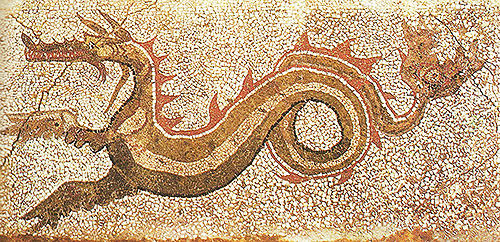The Lord God said to the serpent,
Genesis 3:14-15
“Because you have done this,
cursed are you above all livestock
and above all beasts of the field;
on your belly you shall go,
and dust you shall eat
all the days of your life.
I will put enmity between you and the woman,
and between your offspring and her offspring;
he shall bruise your head,
and you shall bruise his heel.”

In the pronouncement of the curse upon the serpent for its actions in the provoking man’s sin, we see grace extended to the man and woman. It is an interesting contrast in that we see Moses’ depiction of the serpent go from being the most crafty (Hebrew ‘arum) to the most cursed (‘arur). The word ‘arur appears 63 times in the Old Testament, 34 of them are in the Pentateuch. Sixteen times the word is used in Deuteronomy 27 and 28, and in each instance it is used as a pronouncement of judgement against those who would mistreat or abuse fellow image-bearers of the Living God in violation of the covenant. In fact, every time a curse is pronounced by God in the Old Testament it is a response to the abuse of God’s people, with 3 exceptions – all of which when God foiled Balaam’s attempt to curse Israel in Numbers 22-24. In which case, He turned the curse into a blessing.
“Because you have done this,
Genesis 3:14
Cursed are you above all livestock
And above all beasts of the field.
On your belly you shall go,
And dust you shall eat
All the days of your life.”
The Hebrew word for “serpent” is נָחָשׁ (nâchâsh, reflective of the hissing sound a snake makes) and is used 31 times in the Old Testament over 28 verses. The image we see here is likely that the serpent is depicted more accurately as that of a dragon (another translation of the same word), reminiscent of Revelation 12:19 and 20:2, where the serpent is described as “the devil and Satan”. It is interesting that John uses two different names there to represent the serpent as if the devil and Satan are two different entities, and there is likely reason for this. The devil is viewed in legal terms as the “accuser”, where the name Satan is actually the use of the Hebrew word “hasatan”, which is best understood and translated as “the executioner.” Whether “the devil and Satan” are two titles for the same entity intended to show his dual role in the fall of man, or they are two separate entities, both conspiratorially hell-bent on the destruction of God’s kingdom is a matter of debate that will likely never be fully resolved. But what is important is that God first announcement of judgement is not against the woman or the man who sinned against Him, but against the one creature that would abuse God’s image-bearers.
However, within this curse against the serpent is a blessing that we call the Protoevangelium, the first pronouncement of the gospel in which God promises to deliver eternal judgement against Satan and deliverance from death for His image-bearing creation. Even in mankind’s darkest hour up to this point, God provides a promise of hope and grace.
“I will put enmity between you and the woman,
Genesis 3:15
And between your offspring and her offspring.
He shall bruise your head,
And you shall bruise his heel.”
In a real, physical sense the serpent would produce offspring in the world, and even today there is a great enmity between mankind and snakes, for the most part. In some parts of the world, it is interesting to note that there are “snake charmers” who seek to use pagan ritualism to attempt to control snakes. Even within some “Christian” denominations, we see snake handlers who test God by trying to literally manifest an unintended interpretation of Mark 16:18a – “they will pick up serpents with their hands; and if they drink any deadly poison, it will not hurt them.” In these two cases, we see man’s foolish attempts to manifest control over the serpent in ways that God never designed and goes against the spirit of the Protoevangelium.
The message of the Protoevangelium finds its fulfillment in the cross of Calvary. In the cross we see Jesus bruising the head of the serpent by being the sacrifice that transcends our sin and fallen estate. Yes, the serpent ultimately “bruises His heel” by making Jesus experience death on the cross, but His death was not the end. In fact, the word for bruise here is used four times in all of the Old Testament, two of which are here. The other two are in Job 9:17 and Psalm 139:11. In Job, the word is often translated as “crushed” and in Psalm, David’s prayer is “Surely the darkness shall COVER me, and the light about me be night.” In both cases, the word is indicative of overwhelming pain with a threat of death or debilitating defeat.
On Calvary, Satan suffered his greatest defeat. In Revelation, his final defeat is again described in a picturesque, allegorical retelling of the birth, death, and resurrection of Christ. While the serpent may bruise the heel of the seed of the woman (Jesus), he suffered the greater judgement in the crushing of his own head under the foot of God as Christ fulfilled the payment for our sin on Calvary. We need only realize this victory in our own life by placing our faith in His sacrificial, substitutionary death and ultimate resurrection in victory over death, Hell, and the grave.